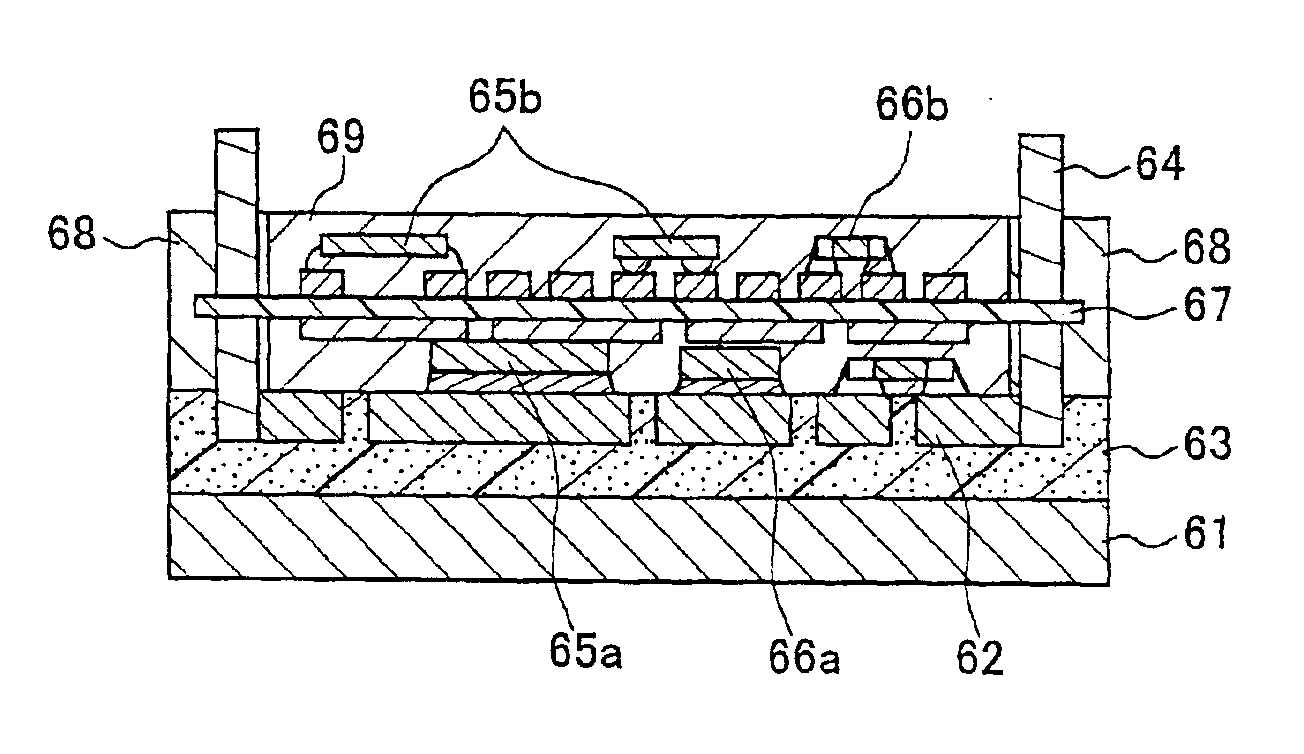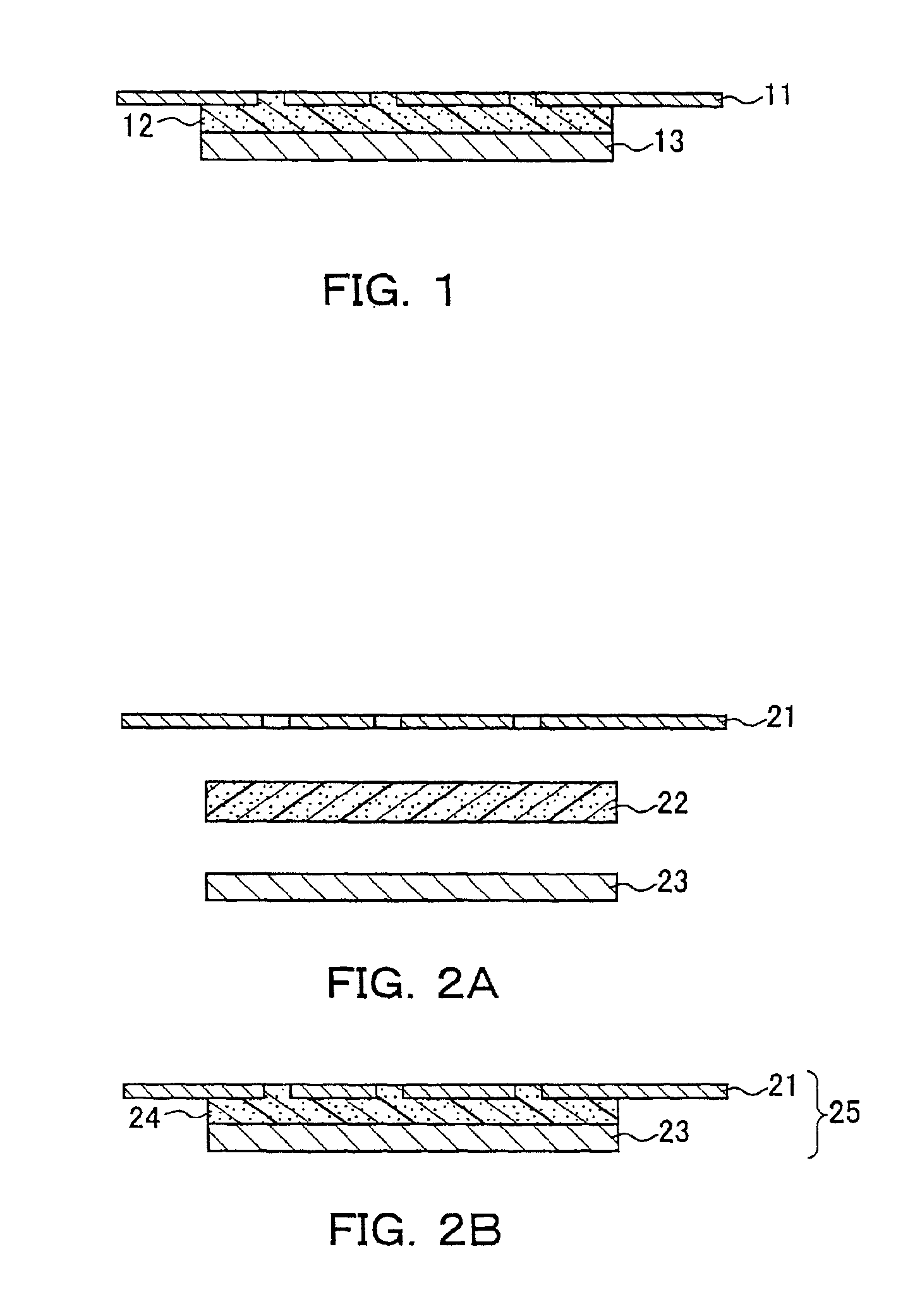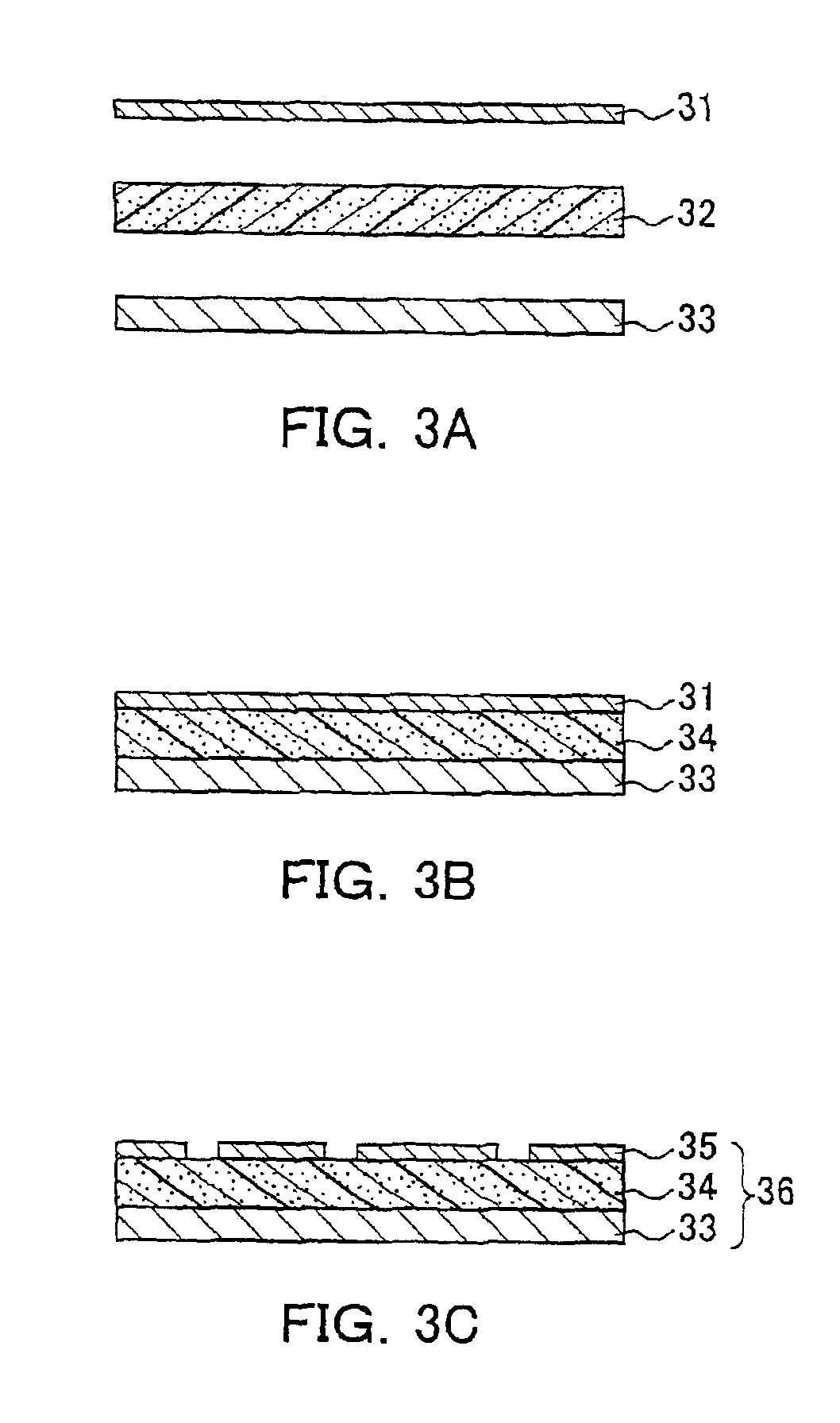Thermal conductive substrate and semiconductor module using the same
a technology of thermal radiation substrate and semiconductor module, which is applied in the direction of semiconductor devices, solid-state devices, basic electric elements, etc., can solve the problems of module rise, insufficient resistance to voltage, and inability to resist voltage, so as to improve thermal radiation properties, reduce cracks or peeling, and achieve high-reliability substrates. the effect of high efficiency
- Summary
- Abstract
- Description
- Claims
- Application Information
AI Technical Summary
Benefits of technology
Problems solved by technology
Method used
Image
Examples
first embodiment
(First Embodiment)
[0036]FIG. 1 is a cross-sectional view showing a structure of a thermal conductive substrate in one embodiment of the present invention. This substrate is composed of a lead frame 11 as a wiring pattern, an electrical insulating layer 12 and a thermal radiation board 13. The electrical insulating layer 12 is composed of a thermal conductive mixture containing an inorganic filler and a thermosetting resin. The content of the inorganic filler is preferred to be in a range from 70 wt % to 95 wt %, and especially, in a range from 85 wt % to 95 wt %. When the content of the blended inorganic filler is less than the above-identified range, a thermal radiation property of the substrate deteriorates. The thermal expansion coefficient of the electrical insulating layer 12 is increased when the inorganic filler content is reduced, and this hinders the tendency of the substrate to warp and protrude toward the thermal radiation board with the rise of temperature. When the cont...
second embodiment
(Second Embodiment)
[0047]FIG. 3A-3C are cross-sectional views of respective steps to show a method of manufacturing a thermal conductive substrate in another embodiment of the present invention. In FIG. 3A, 31 denotes a metal foil, 32 denotes a thermal conductive mixture as described in the first embodiment, and 33 denotes a thermal radiation board as described in the first embodiment. These components are laminated and subjected to heat and pressure as shown in FIG. 3A. The thermosetting resin in the thermal conductive mixture 32 is cured to be an electrical insulating layer 34, and the electrical insulating layer 34 is integrated with the metal foil 31 and the thermal radiation board 33 by adhesion as shown in FIG. 3B. Subsequently, the metal foil 31 is patterned to provide a wiring pattern 35, so that a completed thermal conductive substrate 36 is provided as shown in FIG. 3C. If required, this process can be followed by, for example, a solder-resist printing, soldering of an ext...
third embodiment
(Third Embodiment)
[0049]FIGS. 4A-4E are cross-sectional views of respective steps to show a method of manufacturing a thermal conductive substrate in still another embodiment of the present invention. In FIG. 4A, a metal foil 41 is adhered onto a releasing film 43 via an adhesive layer 42. This metal foil 41 is patterned to provide a wiring pattern 44 as shown in FIG. 4B. The wiring pattern 44 is reversed to be laminated on a thermal conductive mixture 45 and a thermal radiation board 46 as described in the first embodiment in this order, so that the wiring pattern 44 is contacted with the thermal conductive mixture 45 as shown in FIG. 4C. The laminate is subjected to heat and pressure so that the thermosetting resin in the thermal conductive mixture 45 is cured to become an electrical insulating layer 47, and simultaneously, the wiring pattern 44 is integrated with the thermal radiation board 46 by adhesion as shown in FIG. 4D. Later, the releasing film 43 and the adhesive layer 42...
PUM
| Property | Measurement | Unit |
|---|---|---|
| elastic modulus | aaaaa | aaaaa |
| thickness | aaaaa | aaaaa |
| temperature | aaaaa | aaaaa |
Abstract
Description
Claims
Application Information
 Login to View More
Login to View More - R&D
- Intellectual Property
- Life Sciences
- Materials
- Tech Scout
- Unparalleled Data Quality
- Higher Quality Content
- 60% Fewer Hallucinations
Browse by: Latest US Patents, China's latest patents, Technical Efficacy Thesaurus, Application Domain, Technology Topic, Popular Technical Reports.
© 2025 PatSnap. All rights reserved.Legal|Privacy policy|Modern Slavery Act Transparency Statement|Sitemap|About US| Contact US: help@patsnap.com



